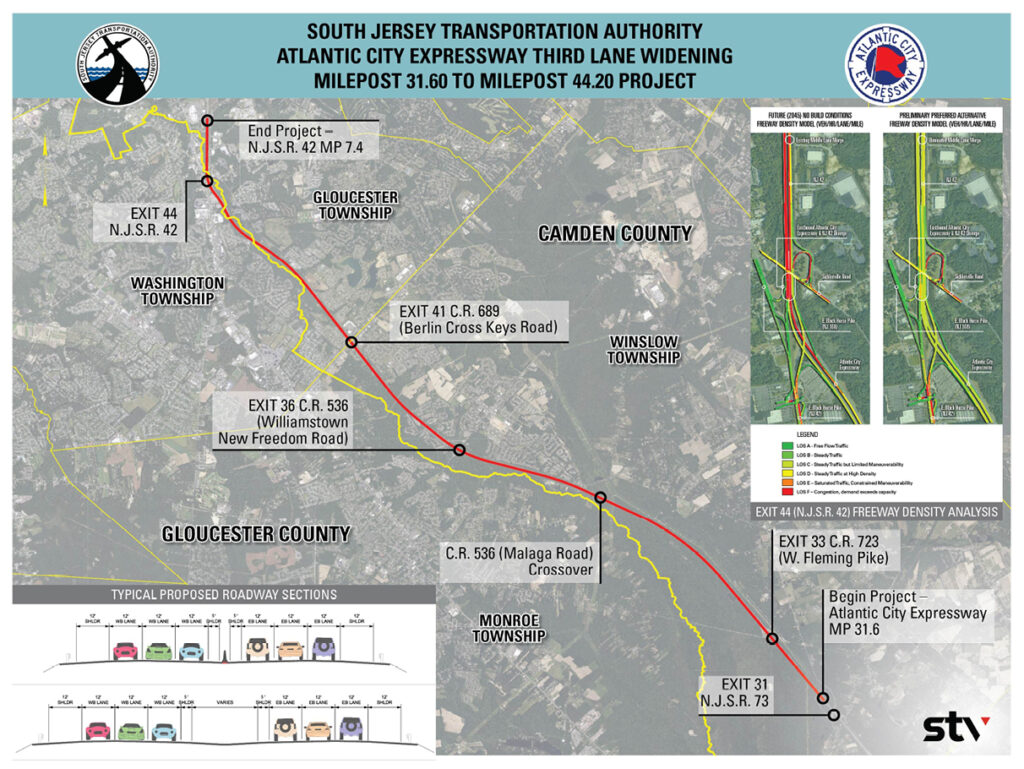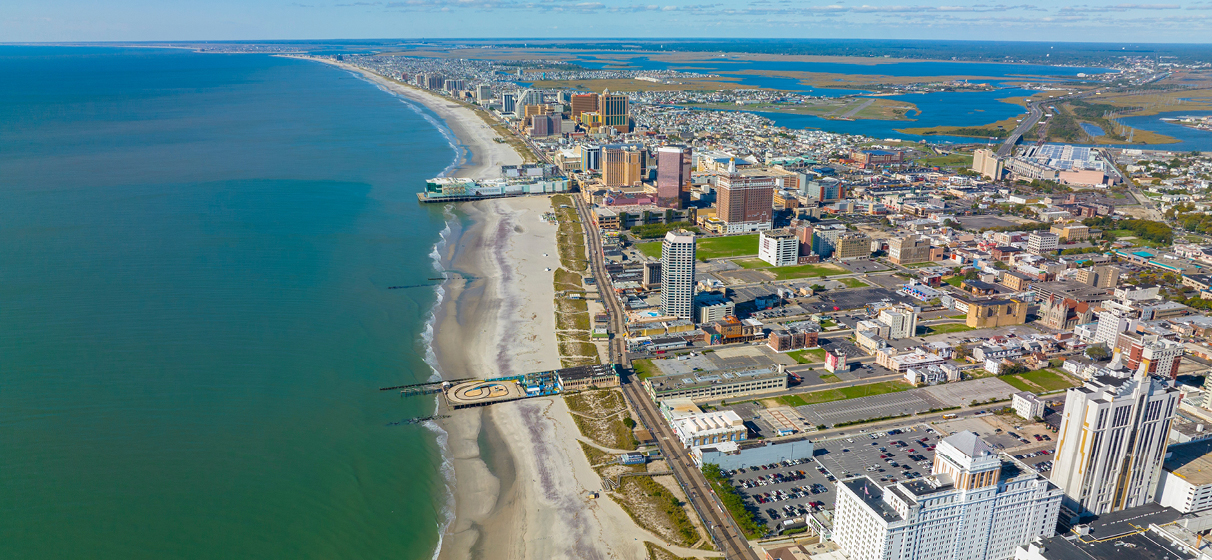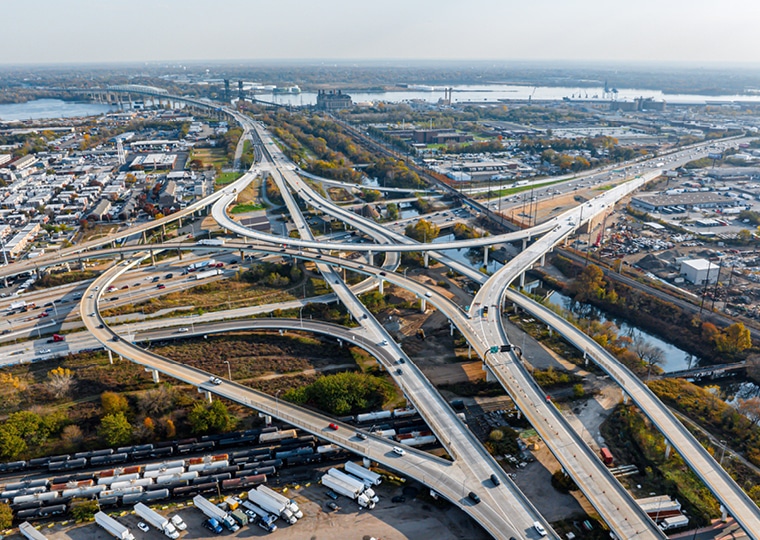STV and partner firms are advancing the final design of a transformative widening project for the Atlantic City Expressway (ACE), one of southern New Jersey’s most vital transportation arteries.
The South Jersey Transportation Authority (SJTA) has contracted with the team to design the expansion of the remaining two-lane section between mileposts 31.60 (Interchange 31) and 44.20 (New Jersey Route 42).
“This project will be transformative, delivering a more efficient travel experience for Jersey commuters and beachgoers,” said Marc Preim, PE, vice president and area manager at STV.
The ACE spans nearly 45 miles, connecting the Greater Philadelphia region with Atlantic City and other South Jersey Shore communities. As the primary east-west corridor in the region, it provides seamless access to key destinations, including the Jersey Shore, major casinos, entertainment venues and business hubs. Its role in linking suburban, urban and coastal communities make it an essential infrastructure asset for both mobility and regional growth.
According to SJTA’s Executive Director Stephen F. Dougherty, the widening project “marks a significant advancement in modernizing a critical transportation link between the western terminus and the shore communities from Brigantine to Cape May.
A conceptual development study completed in 2021 identified the 12.6-mile segment in Gloucester and Camden Counties as the most congested on the ACE corridor. It recommended a widening program as the preliminary preferred alternative (PPA) to address insufficient capacity, problematic lane configurations, slow travel times and excessive queues at the N.J. 42 interchange. Through 2024, the PPA was further developed in preliminary engineering, culminating in an Executive Order 215 submission to the New Jersey Department of Environmental Protection.
“Imagine cruising down the ACE with ease, enjoying smooth, efficient travel and fresh air instead of congestion,” said Kenneth Burkhardt, PE, PTOE, vice president and district manager at STV. “This program is going to be a game-changer for everyone on the road.”

The project adds a third lane in each direction, including through the N.J. 42 interchange, and includes improvements to acceleration and deceleration lanes and roadway geometry. It eliminates the middle lane drop on the northbound side of the interchange. Key elements of the widening project include:
- Adding a third travel lane in each direction from milepost 31.6 to milepost 44.2.
- Upgrading three mainline bridges over Sicklerville Road, Route 42 and the Great Egg Harbor River.
- Improving traffic flow and mobility for the entire South Jersey/Philadelphia region.
- Increasing coastal resilience and emergency evacuation capacity.
- Implementing sustainable construction practices to minimize environmental impacts.
- Mitigating congestion-related air pollution, noise and carbon emissions.
“Updating our aging infrastructure across the region is vital to not only resolving chronic commuter and summertime bottlenecks that present safety risks and environmental hazards each year, but also to being good stewards to future generations,” said Kyle Rutherford, PE, CME, operations manager and senior project manager at STV, overseeing the design of the ACE widening project.
The added lanes reduce overall traffic density (vehicles/hour/lane/mile) within the corridor by 45%. Travel times through the N.J. 42 interchange will see significant improvement, with reduced travel times of 55% and 25% in the westbound and eastbound directions, respectively, when compared to projected 2045 conditions without the project.
“By expanding to three lanes in each direction, we’re enhancing the ACE’s ability to handle current and future traffic volumes, especially during peak summer season,” Doughtery added. “The improvements will streamline travel patterns, reduce delays and support a more reliable flow of movement. It reflects a forward-thinking approach to infrastructure that keeps pace with the region’s growth. This is about ensuring the corridor continues to serve as a strong, resilient connector for decades to come.”







